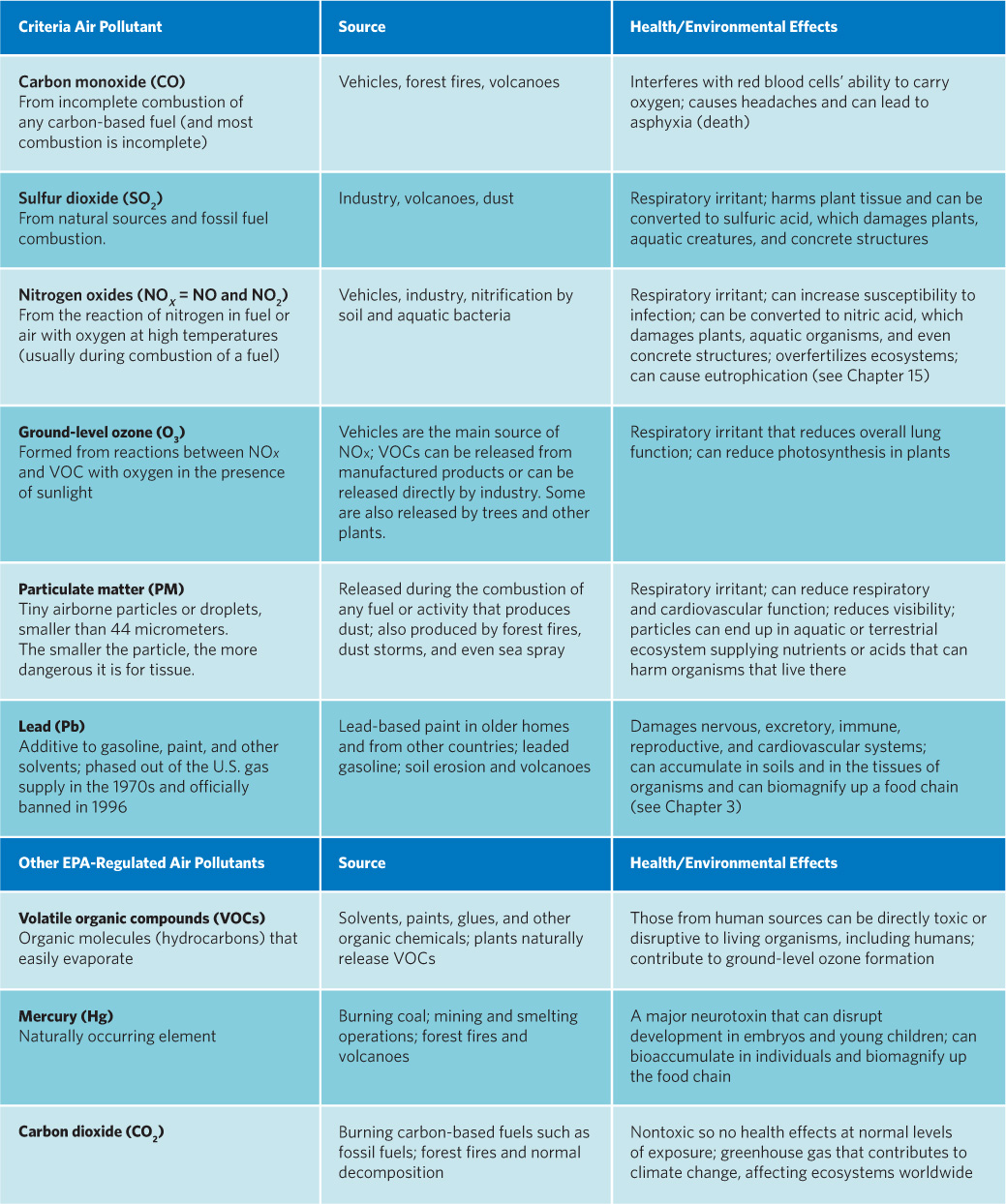Outdoor air pollution has many sources.
Where does outdoor air pollution come from? The burning of fossil fuels commercially, industrially, and residentially contributes heavily to outdoor air pollution. Coal and oil burning releases emissions that can produce smog that contains a variety of pollutants, including SO2, NOx, particulates, and ground-level ozone.
Factories, incinerators, and mining operations also release pollutants. Industrial pollution releases point source pollution, so named because it is possible to identify the pollution’s exact point of entry into the environment. Hypothetically, point source pollution is easier to monitor and regulate than is nonpoint source pollution—pollution from dispersed or mobile sources like vehicles and lawn mowers.
point source pollution
Pollution that enters the air from a readily identifiable source such as a smokestack.
nonpoint source pollution
Pollution that enters the air from dispersed or mobile sources.
Agriculture is yet another source of nonpoint source outdoor pollution. Toxic pesticides sprayed on crops can become airborne and drift as far as 30 kilometers (20 miles); confined animal feeding operations produce significant odor problems and particulate pollution; and animal waste contributes to global warming by releasing the greenhouse gas methane.
In his study in Los Angeles County, Delfino found that particles contained in diesel fuel exhaust were among the worst asthma culprits. In addition, particulate levels were higher in Riverside, one of two regions he tested; the researchers concluded that Riverside had more pollution because it was downwind of the main urban areas in Los Angeles.
KEY CONCEPT 20.4
In addition to the criteria pollutants, the EPA regulates VOCs and mercury, and it is developing a program to regulate CO2, an air pollutant linked to climate change.
In addition to the 6 criteria pollutants, the EPA also recognizes 187 hazardous air pollutants that can have adverse effects on human health, even in small doses. These toxic substances may cause cancer or developmental defects, or they may damage the central nervous system or other body tissues. They include volatile organic compounds (VOCs), a variety of chemicals that readily evaporate but don’t dissolve in water. VOCs are released by natural sources such as wetlands, and household products including paint, carpets, and cleaners; the main outdoor source is fossil fuel combustion. And in 2007, the EPA ruled that greenhouse gases are air pollutants, giving the agency the authority to regulate carbon dioxide (CO2) emissions. TABLE 20.1


What types of pollution listed here are you exposed to on a daily basis, and what are their sources?
Answers will vary depending on where the students are living. In urban and suburban areas there is likely to be exposure to nitrogen oxides, ozone, and particulate matter due to vehicle traffic. Many areas in the eastern US experience sulfur pollution from coal burning power plants. Everyone is exposed to CO2 (though it is not a human health hazard).